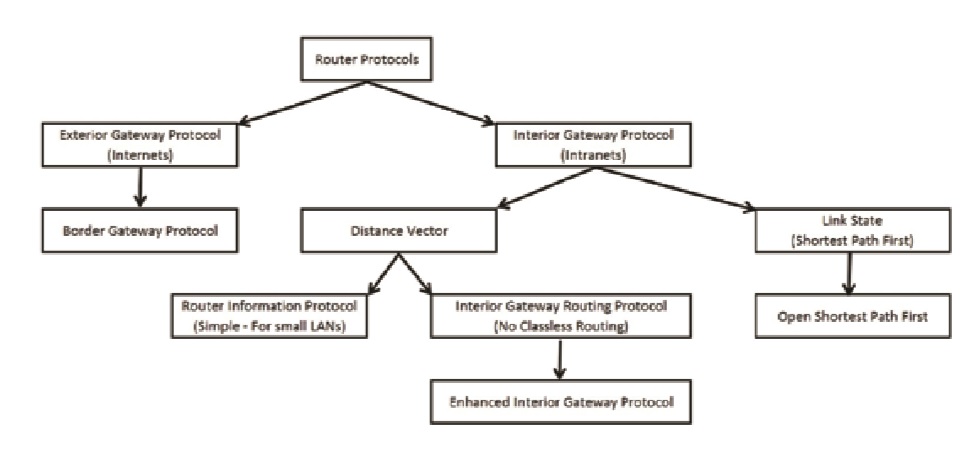Network Level Router Protocols

RIP is very common, as it is the simplest to implement. RIP was invented in the late 1970s and early 1980s. It is the oldest of the routing methods. Its basic metric is to use hop counts. This value is usually defaulted at 15. This means that as packet is passed from router to router, each router increases the hop count metric by one. When a router receives a packet that has its hop count at 15 it discards it, thus preventing “loops”.
That router sends an update to all other routers in the network that the particular route was unreachable. The router will start an internal timer before it will accept information from other routers that a destination has become reachable, and to try that path in the future.
The drawback in using the hop count metric is that this limits the size of the network that can be implemented using RIP. In addition, RIP didn’t allow for Classless routing, it only understood the traditional Class A, B, and C addresses. Techniques used by RIP to maximize routing efficiency include that as RIP routers advertise available routes among routers, a RIP router remembers where it learned of a new route, and will never advertise that route back to the router that it received the information from. This also stops loops from occurring.
RIP does not respond rapidly to changes; they can flood the network with info as they update. Most routers know how to do RIP, but OSPF is replacing many RIP interior routers.
There is a newer version of RIP known as RIPv2. This newer version allows classless routing. RIPv2 also allows routers to know if traffic is external (via EGP) or internal (IGP).